Mangoes are a tropical fruit that have been enjoyed for centuries. They are known for their sweet and juicy flesh, which is often described as having a combination of flavors. But what does a mango taste like exactly?
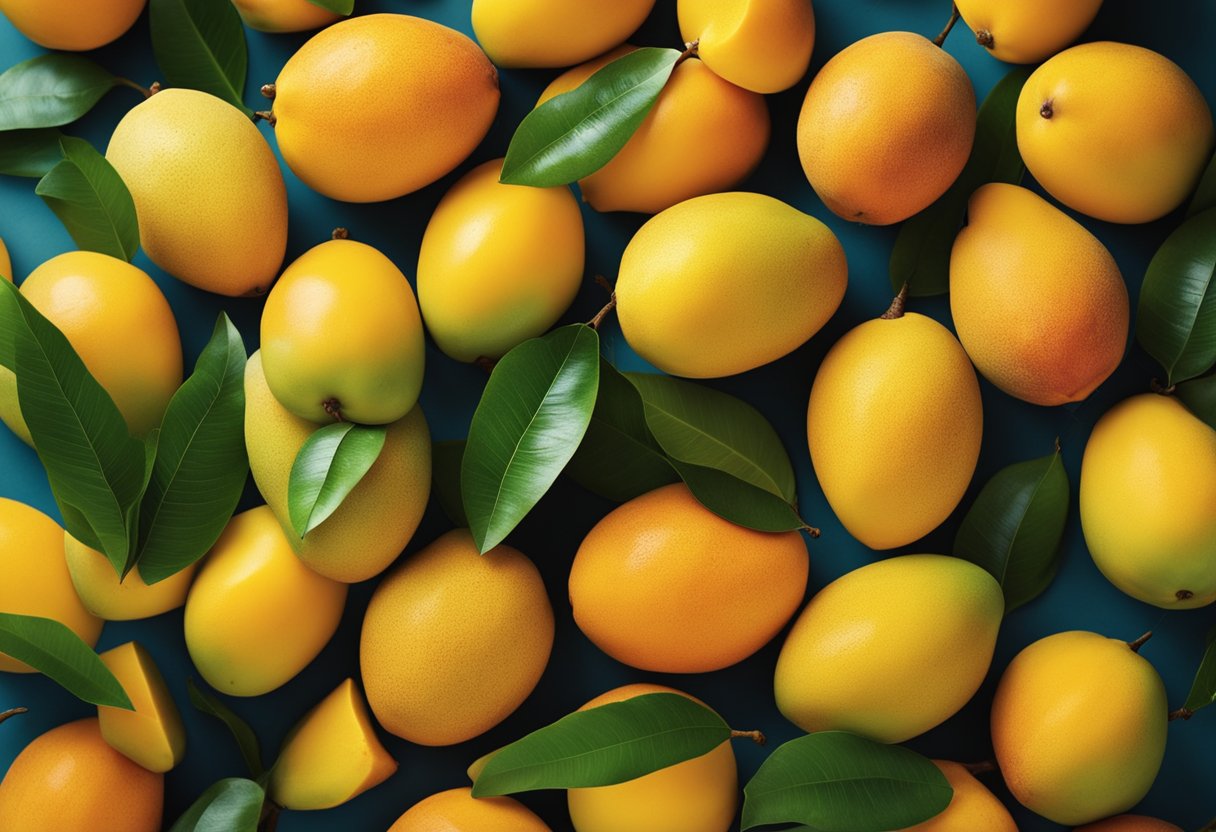
The taste of a mango can be described as sweet and fruity, with undertones of pine and floral notes.
The texture is creamy and smooth, making it a popular ingredient in smoothies, desserts, and other dishes. However, the taste can vary depending on the variety of mango and its ripeness.
In this article, I will explore the taste and texture of mangoes, as well as their color, ripeness, and aroma. I will also discuss the health benefits of mangoes and their culinary uses.
By the end of this article, you will have a better understanding of what a mango tastes like and how to enjoy this delicious fruit.
Key Takeaways
- Mangoes have a sweet and fruity taste with undertones of pine and floral notes.
- The texture of mangoes is creamy and smooth, making them a popular ingredient in many dishes.
- Mangoes are not only delicious but also have numerous health benefits and culinary uses.
Understanding Mangoes
Mangoes are a tropical fruit that belong to the drupe family. They are often referred to as the “king of fruit” due to their popularity and delicious taste.
Mangoes are native to South Asia but are now grown in many countries around the world, including Mexico, Brazil, and the Philippines.
The taste of a mango can be described as sweet and fruity with a hint of pine and floral undertones. The texture is creamy and smooth, making it a perfect addition to smoothies, chutneys, and salads.
There are many different varieties of mangoes, each with their own unique taste and texture.
One of the most popular varieties of mango is the Tommy Atkins. This mango has a sweet and tangy taste with a firm texture that holds up well in cooking.
Another popular variety is the Keitt mango, which has a sweet and juicy taste with a smooth texture.
The Haden mango is another popular variety that has a sweet and fruity taste with a soft and juicy texture. It is often used in desserts and smoothies due to its sweet flavor and smooth texture.
When selecting a mango, it is important to choose one that is ripe but not overly ripe. A ripe mango will have a sweet aroma and a slightly soft texture when gently pressed.
Mangoes can be stored at room temperature until they are ripe, and then stored in the refrigerator to extend their shelf life.
Overall, mangoes are a delicious and versatile fruit that can be enjoyed in many different ways. Whether eaten fresh or used in cooking, mangoes are sure to add a sweet and tropical flavor to any dish.
The Taste of Mangoes
Mangoes are one of the most popular tropical fruits, and their taste is unique and delicious.
As someone who has tasted many different types of mangoes, I can confidently say that they have a sweet, fruity flavor with a hint of tartness and sourness.
The taste of mangoes can be described as a combination of several flavors, including citrus, peach, and pineapple.
The sweetness of mangoes is what makes them so enjoyable to eat, and their tropical flavor is what makes them a favorite among many people.
When ripe, mangoes have a soft and juicy texture that melts in your mouth. The flesh of the fruit is smooth and creamy, which is why many people use it to make smoothies, sorbets, and other desserts.
Some varieties of mangoes are known for their tangy or tart flavor, while others have floral notes with hints of honey and citrus.
The taste of mangoes can also vary depending on the ripeness of the fruit. Unripe mangoes are harder and have a sour taste that is similar to tart limes.
In conclusion, the taste of mangoes is sweet and fruity with a hint of tartness and sourness. The texture is smooth and creamy, and the flavor is a combination of citrus, peach, and pineapple.
The taste can vary depending on the ripeness and variety of the fruit, but overall, mangoes have a unique and delicious flavor that is enjoyed by many people around the world.
The Texture of Mangoes
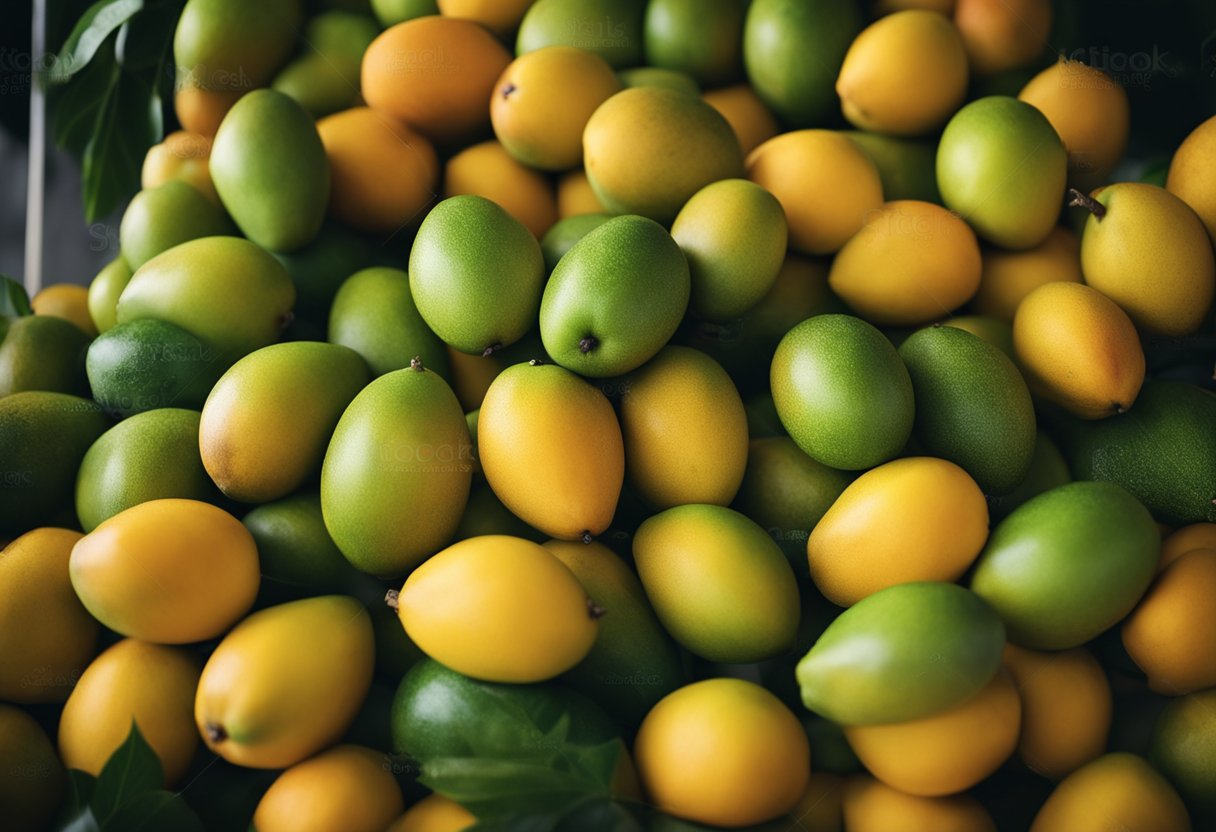
As an expert in food, I can tell you that the texture of mangoes is one of their most appealing qualities.
When you bite into a ripe mango, you’ll notice that it has a soft and juicy texture that almost melts in your mouth. The flesh of the mango is very delicate, and it’s easy to cut through with a knife or fork.
Mangoes are often used in smoothies because of their creamy texture. When blended with other ingredients, the mango adds a smooth and velvety consistency to the drink.
If you’re looking for a healthy and refreshing drink, a mango smoothie is an excellent choice.
While mangoes are generally soft and creamy, some varieties can be a bit stringy. This is especially true if the mango isn’t fully ripe.
However, if you choose a ripe mango, you’ll find that it has a smooth and creamy texture that is very pleasant to eat.
In conclusion, the texture of mangoes is one of their most appealing qualities. They have a soft, juicy, and creamy texture that makes them perfect for smoothies, desserts, and snacks.
If you’re looking for a delicious and healthy fruit to add to your diet, mangoes are an excellent choice.
Color and Ripeness
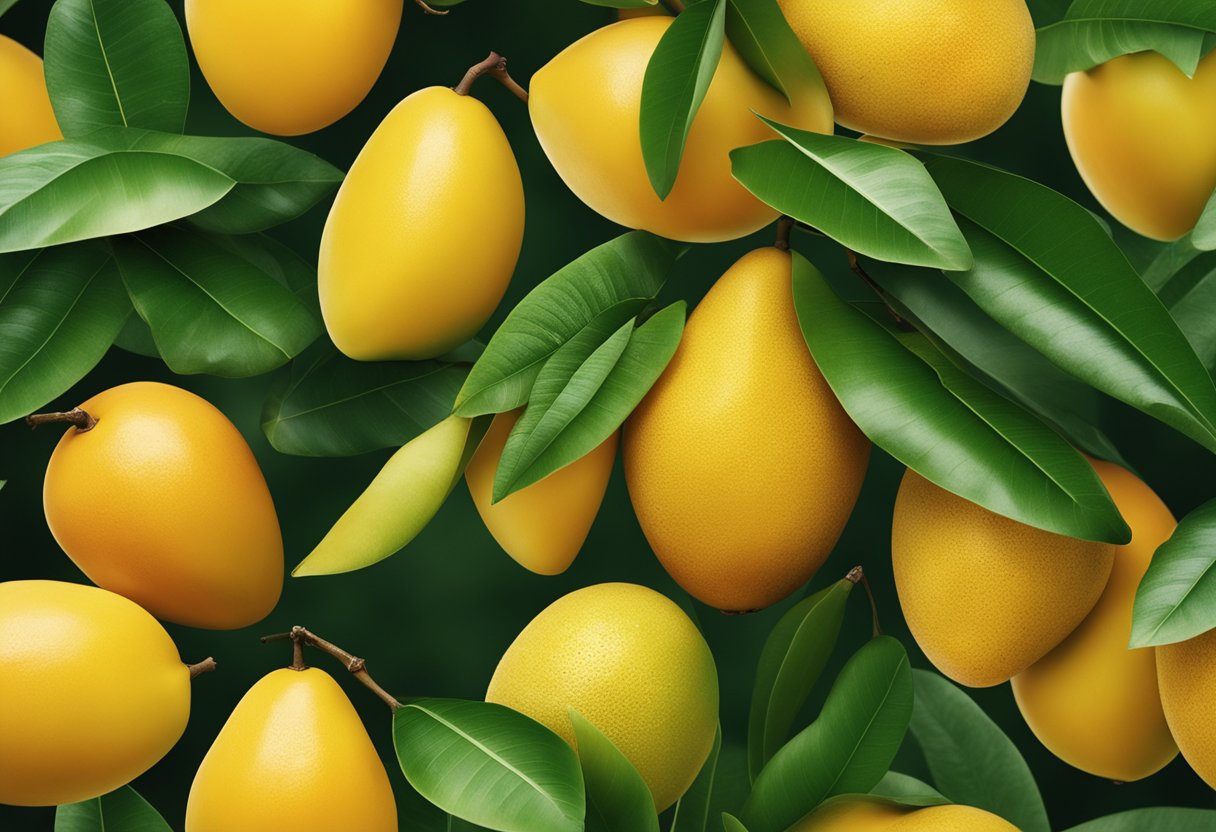
When it comes to the taste of mangoes, the color and ripeness of the fruit play a significant role.
Mangoes can be found in a variety of colors, including green, yellow, orange, red, and even purple. However, the color of the mango is not always a reliable indicator of ripeness.
A ripe mango should have a sweet, tropical taste with a slight tanginess that balances out its sweetness.
To determine whether a mango is ripe, you can use a few different methods. One popular method is to give the mango a gentle squeeze.
A ripe mango should give way slightly when you apply pressure. If the mango is firm and solid, like trying to squeeze a rock, it’s likely unripe.
Conversely, if it gives too much, feels soggy in your hand, or has a bunch of overly soft spots, it’s gone too far.
Another way to tell if a mango is ripe is to look at its color. However, the color of a mango can be misleading.
Mangoes come in different varieties, and each variety has a different color when ripe. For example, Ataulfo mangoes are vibrant yellow, Tommy Atkins mangoes are deep red with gold accents, and Keitt mangoes are green with pink undertones even when ripe.
So, there is no one-shade-fits-all mango color.
If you’re unsure whether a mango is ripe, you can also check its smell. A ripe mango should have a sweet, fruity aroma. If the mango smells sour or fermented, it’s likely overripe.
In conclusion, the taste of a mango is influenced by its ripeness and color. A ripe mango should have a sweet, tropical taste with a slight tanginess that balances out its sweetness.
To determine whether a mango is ripe, you can use a few different methods, including giving it a gentle squeeze, looking at its color, and checking its smell.
However, the color of a mango can be misleading, so it’s important to use other methods to confirm its ripeness.
Smell and Aroma of Mangoes
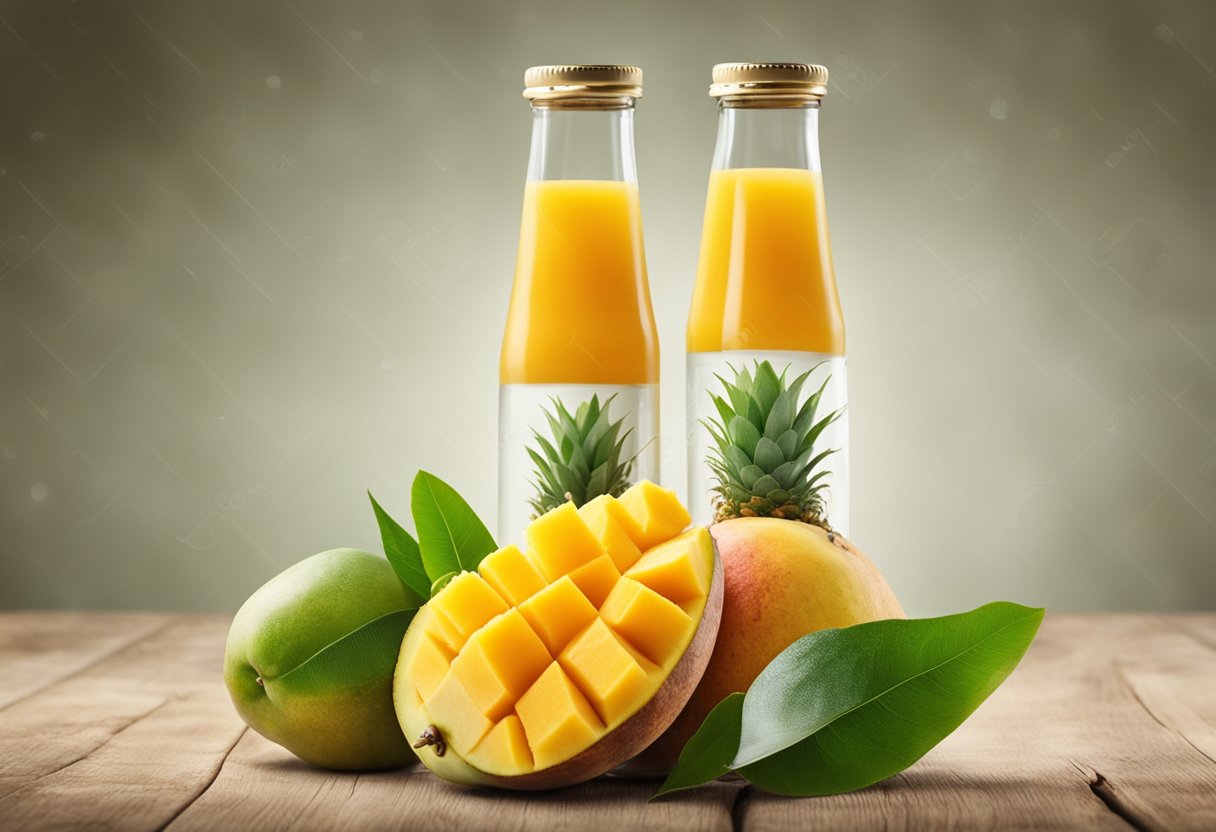
Mangoes are known for their distinct tropical aroma that is both sweet and fruity. As I hold a ripe mango close to my nose, I can detect hints of pineapple mixed with melon scents.
The aroma is strongest near the stem end of the fruit, so be sure to smell it from there.
The smell of mangoes is caused by a combination of volatile compounds, including terpenes, esters, and aldehydes. These compounds are also responsible for the fruit’s sweet and floral taste.
Some people might detect a slight hint of pine in the aroma of mangoes. This is because some mango varieties contain a compound called alpha-pinene, which is also found in pine trees.
However, this piney aroma is not always present in all mangoes.
Mangoes can also have a slightly floral aroma, which is caused by compounds such as linalool and geraniol. These compounds give the fruit a delicate, sweet fragrance that is reminiscent of flowers.
Overall, the aroma of mangoes is delightful and inviting. It is one of the reasons why mangoes are so popular in many cultures around the world.
Health Benefits of Mangoes
Mangoes are not only delicious but also packed with various nutrients that offer several health benefits. Here are some of the key health benefits of mangoes:
Rich in Antioxidants
Mangoes are a rich source of antioxidants, which help to protect our cells from damage caused by free radicals.
These antioxidants include several carotenoids, such as beta-carotene and alpha-carotene, as well as vitamin C.
High in Vitamins and Minerals
Mangoes are an excellent source of several vitamins and minerals, including vitamin C, vitamin A, and potassium.
Vitamin C is essential for a healthy immune system, while vitamin A is important for healthy vision and skin. Potassium is essential for maintaining healthy blood pressure levels.
High in Fiber
Mangoes are also a good source of dietary fiber, which is important for maintaining a healthy digestive system. Fiber helps to promote regular bowel movements and can also help to lower cholesterol levels.
Low in Calories and Sugar
Mangoes are relatively low in calories and sugar compared to other fruits. One cup of diced mango contains only 99 calories and 23 grams of sugar.
This makes mangoes a great option for those who are watching their calorie and sugar intake.
In conclusion, mangoes are a delicious and nutritious fruit that offer several health benefits. They are rich in antioxidants, vitamins, and minerals, high in fiber, and low in calories and sugar.
Incorporating mangoes into your diet can help to boost your overall health and well-being.
Culinary Uses of Mangoes
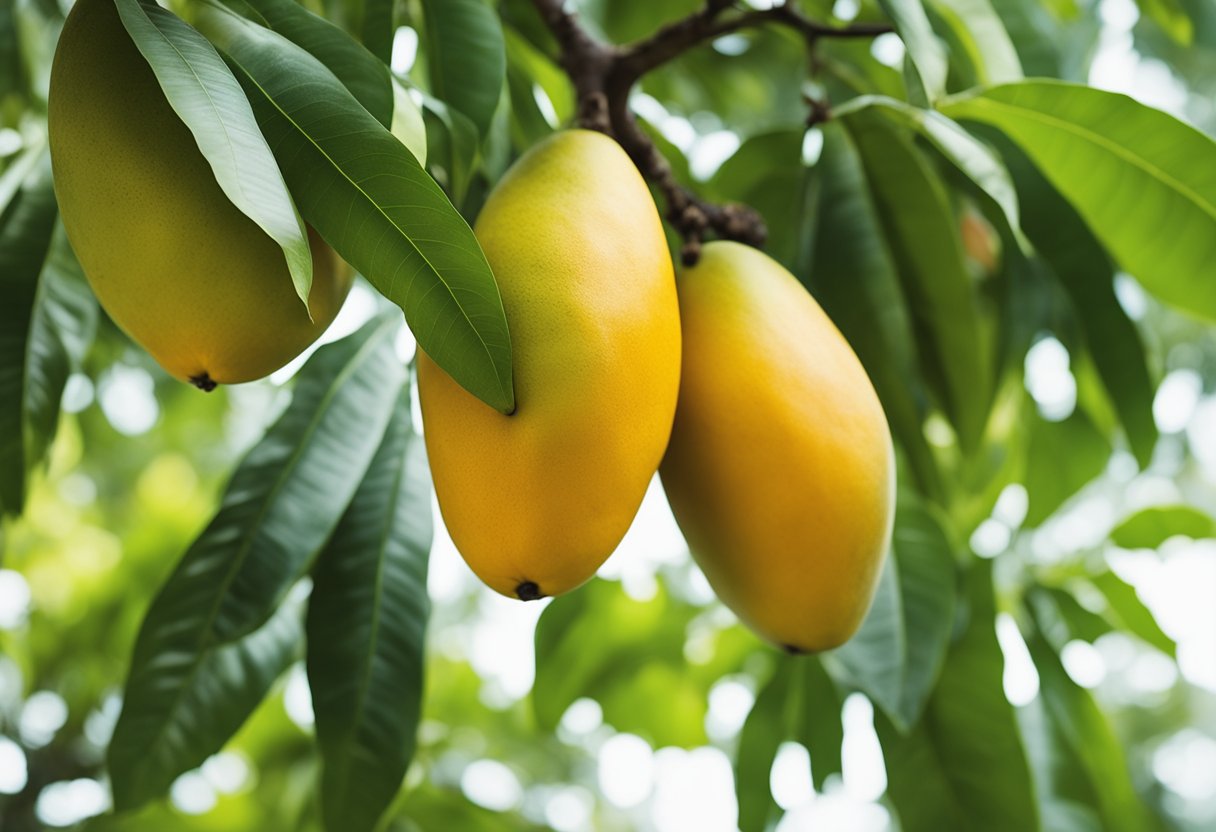
As a versatile fruit, mangoes can be used in a wide range of culinary applications. Here are some of the most popular ways to use mangoes in the kitchen:
Salads
Mangoes can add a sweet and tangy flavor to salads. Diced mangoes can be combined with other fruits such as strawberries, blueberries, and kiwi to create a fruit salad.
Mangoes can also be added to green salads with lettuce, spinach, and arugula. To balance out the sweetness of the mangoes, add a tangy dressing such as a vinaigrette.
Salsas
Mango salsa is a popular condiment that can be used as a dip or topping for tacos, grilled meats, and seafood.
To make mango salsa, combine diced mangoes with diced red onion, cilantro, lime juice, and jalapeno peppers. The sweetness of the mangoes pairs well with the spiciness of the jalapeno peppers.
Juices and Smoothies
Mangoes are a great addition to juices and smoothies. They add a sweet and fruity flavor and are packed with vitamins and minerals.
For a simple mango juice, blend diced mangoes with water and sugar. To make a mango smoothie, blend diced mangoes with yogurt, milk, and honey.
Mango Chutney
Mango chutney is a sweet and spicy condiment that can be used as a spread or dip.
To make mango chutney, combine diced mangoes with sugar, vinegar, ginger, garlic, and spices such as cumin and coriander. Mango chutney pairs well with cheese, crackers, and bread.
Lassi
Mango lassi is a popular Indian drink made with yogurt, milk, and mangoes. To make mango lassi, blend diced mangoes with yogurt, milk, and sugar.
Mango lassi is a refreshing drink that can be enjoyed as a dessert or snack.
Margaritas
Mango margaritas are a fruity twist on the classic cocktail. To make mango margaritas, blend diced mangoes with tequila, lime juice, and triple sec. Serve the margaritas over ice with a salt rim.
Ice Cream
Mango ice cream is a creamy and refreshing dessert. To make mango ice cream, blend diced mangoes with heavy cream, sugar, and vanilla extract.
Freeze the mixture in an ice cream maker according to the manufacturer’s instructions. Mango ice cream can be enjoyed on its own or as a topping for other desserts.
Mangoes are a versatile fruit that can be used in a variety of sweet and savory dishes. From salads to salsas to smoothies, mangoes add a sweet and fruity flavor to any dish.
Storing and Handling Mangoes

As a mango lover, I know how important it is to store and handle mangoes properly to ensure they stay fresh and delicious for as long as possible. Here are some tips on how to store and handle mangoes:
Store
Mangoes can be stored at room temperature until they are ripe. Once they are ripe, they should be stored in the refrigerator to slow down the ripening process and extend their shelf life.
According to Real Simple, mangoes can last up to five days in the refrigerator.
Cut
To cut a mango, first, wash it thoroughly. Then, hold the mango with one hand and slice it lengthwise along the seed, starting from the top and ending at the bottom.
Repeat on the other side. You can then score the flesh in a criss-cross pattern and scoop it out with a spoon.
Freeze
If you have too many mangoes to eat before they go bad, you can freeze them. First, peel and cube the mangoes. Then, spread the cubes out on a baking sheet and freeze them.
Once they are frozen, transfer them to a freezer-safe container or bag. According to Mango Maven, frozen mangoes can last up to six months in the freezer.
Refrigerator
As mentioned earlier, ripe mangoes should be stored in the refrigerator. However, it’s important not to store them for too long. According to Storables, mangoes should be consumed within five days of being refrigerated.
Room Temperature
If you have unripe mangoes, you can store them at room temperature until they are ripe. This can take anywhere from two to five days. Once they are ripe, they should be stored in the refrigerator.
Cube
Cubing a mango is a great way to enjoy it as a snack or add it to a recipe. To cube a mango, first, wash it thoroughly. Then, hold the mango with one hand and slice it lengthwise along the seed, starting from the top and ending at the bottom.
Repeat on the other side. You can then score the flesh in a criss-cross pattern and scoop it out with a spoon. Finally, cut the cubes away from the skin.
By following these tips, you can store and handle mangoes properly and enjoy their delicious taste for longer.
Mangoes Around the World
As a fruit that originated in India, mangoes have become a staple in many parts of the world. In fact, mangoes are now widely grown in Asia, South America, and even the United States.
In India, mangoes are considered the national fruit and are an integral part of the country’s culture and cuisine.
Indian mangoes are known for their sweet and juicy taste, and are often used in desserts such as mango lassi and mango kulfi.
In Asia, mangoes are also a popular fruit and are grown in countries such as Thailand, the Philippines, and Vietnam.
Thai mangoes, for example, are known for their sweet and tangy taste, while Philippine mangoes are considered some of the sweetest in the world.
In South America, mangoes are grown in countries such as Mexico, Brazil, and Peru.
Mexican mangoes are known for their rich and creamy texture, while Brazilian mangoes are often used in the country’s famous caipirinha cocktail.
In the United States, mangoes are primarily grown in Florida and California. While they may not be as widely consumed as in other parts of the world, American mangoes are still enjoyed for their sweet and tropical taste.
Overall, mangoes are a beloved fruit around the world, with each region offering its own unique take on this delicious fruit.
Frequently Asked Questions
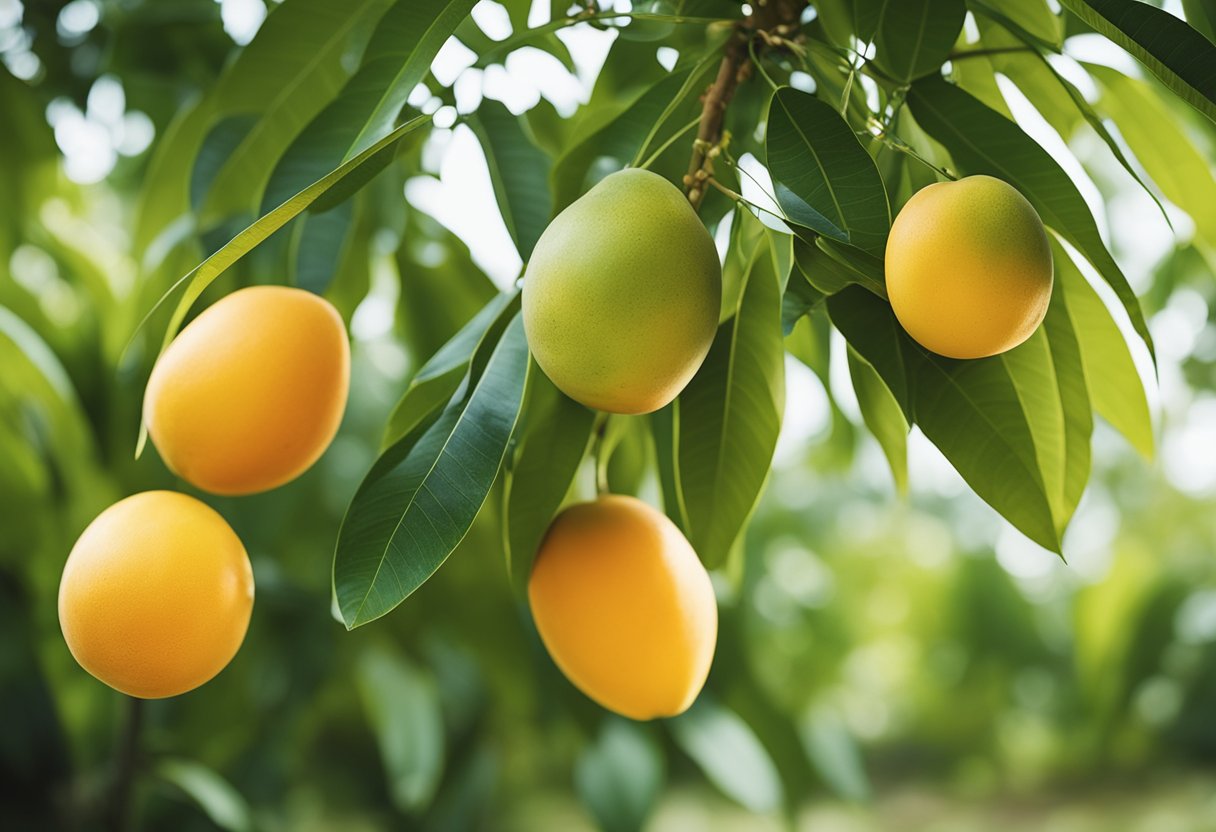
What are some interesting facts about mangoes?
Mangoes are known as the “king of fruits” due to their popularity and nutritional value. They are native to South Asia but are now grown in many tropical and subtropical regions worldwide.
Mangoes are a good source of vitamins A and C and contain dietary fiber. They also have a low glycemic index, making them a good choice for people with diabetes.
What are some flavor pairings for mango?
Mangoes have a sweet and tropical flavor that pairs well with many other fruits and flavors. Some popular pairings include lime, coconut, ginger, and chili.
Mangoes also go well with savory dishes such as grilled chicken or fish.
Where do mangoes typically grow?
Mangoes are grown in many tropical and subtropical regions, including India, Mexico, and the Philippines. In the United States, they are primarily grown in Florida and California.
What is the taste of papaya, and how does it compare to mango?
Papaya has a sweet, musky flavor with a buttery texture. It is often compared to mango due to its tropical flavor, but it has a milder taste and a softer texture.
Papaya is also a good source of vitamin C and contains digestive enzymes that can aid in digestion.
Can you describe the taste of mango?
Mangoes have a sweet and fruity flavor with a creamy texture. They have a unique combination of flavors, including citrus, peach, and pineapple.
Some mangoes also have a floral or slightly tart taste. The taste can vary depending on the variety of mango and its ripeness.
What other fruits taste similar to mango?
Papaya, guava, and passionfruit are fruits that have a similar tropical flavor to mango. Pineapple and peach also have some similar flavor notes to mango.
However, mango has a unique combination of flavors that sets it apart from other fruits.







